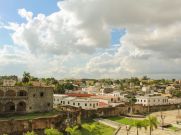As many writers know, publishers resist multi-authored books, probably because readers resist them, too. Part of what sells books is the experience of being immersed in the thoughts, style, and distinctive personality of an author. It’s hard to embrace a book in which one has to keep starting over. It may be especially difficult to embrace a book with a title like The Politically Correct University, which employs a term that is already twenty years old in its present application, and sounding a bit tired.
Still, there is much to be said for collecting the wisdom and experience of knowledgeable people on an important topic, which the editors of The Politically Correct University have done. The result is a treasure-trove of personal anecdotes, study summaries, and commentary—well worth resigning oneself to the collected-essays approach and the familiarity of the topic.
I first encountered the term “politically correct” in the New York Times in 1990. In “Ideas & Trends; The Rising Hegemony of the Politically Correct,” Richard Bernstein wrote that the phrase, “with its suggestion of Stalinist orthodoxy,” was “being heard more and more in debates over what should be taught at the universities.”
The implication that faculty in the citadels of academic freedom were demanding a Soviet-style conformity was chilling. It was a new idea then, at least to me. And to what were they conforming? Bernstein labeled it as “a cluster of opinions about race, ecology, feminism, culture and foreign policy…a sort of unofficial ideology of the university.”
Twenty years later, that description of “politically correct” is still accurate, although its opinions have been suffused with an anti-capitalist and anti-Western mentality that Bernstein’s definition didn’t fully capture. The ideology has crept into every nook and cranny of the university. Talking to most academics about “race, ecology, feminism, culture and foreign policy” is like talking to fish about water (to echo television broadcaster John Stossel’s description of what it was like to explain left-wing ideology to his journalistic colleagues).
Fortunately, however, the twenty-year history of political correctness has allowed insightful analysts (some of them from inside the academy) to reflect on what has happened to our universities. The editors of The Politically Correct University, Robert Maranto, Richard E. Redding, and Frederick M. Hess, have found some of the best of these analysts and organized their comments into four parts. They provide extensive evidence that politically correct attitudes do indeed dominate academia; reasons why that may be the case; specific illustrations in disciplines such as English, political science, and history; and suggestions for possible reforms.
So, how do you tackle a book with so many nodes and modes of analysis? You choose a few and let the reader discover others. (By the way, George Leef discussed these others in “Are We Stuck with the Politically Correct University?” a December 15, 2009, posting on the Pope Center for Higher Education Policy website.)
First, I should acknowledge that one great value of The Politically Correct University is its reports on important studies of recent years that confirm the existence of the “left university” (to use a term James Piereson coined in an article by that title in the October 3, 2005, Weekly Standard). For example, the book contains two essays by Daniel Klein and Charlotta Stern, “By the Numbers: The Ideological Profile of Professors,” which gathers up numerous studies that reveal the political affiliations and ideologies of university faculty, and “Groupthink in Academia: Majoritarian Departmental Politics and the Professional Pyramid,” which explains how a discipline becomes increasingly ideological over time.
Along similar lines, in “Left Pipeline: Why Conservatives Don’t Get Doctorates,” political scientists Matthew Woessner and April Kelly-Woessner report on their surveys probing why there are so few conservative faculty on campus. Although their findings emphasize differences in personal interests between liberal and conservative students—for example, the desire to have a family, which seems to be a conservative preference and perhaps somewhat incompatible with academia—other factors surface. The authors observe that “liberal students are more likely to find faculty mentors who guide them toward graduate study” (and thus toward the possibility of becoming professors in the future).
Then there are the discipline-specific analyses. In an absorbing but depressing essay, “History Upside Down,” Victor David Hanson points out that historians of Western civilization have always been critical of their own civilization—and “intellectually curious” about others. The Greek historian Herodotus was fascinated by the Egyptians, and the Roman historian Tacitus admired the tribal culture of the Germans, Rome’s enemies. And, says Hanson, contemporaries of Tacitus offered “savage portraits” of the prominent classes of their times, both the traditional elites and the nouveau riche.
But today, instead of “disinterested criticism of Western customs and protocols,” the aim of academic scholarship is simply to condemn the West. “[T]he same standards of scrutiny rarely apply to the so-called other,” Hanson writes. The “other” is any group that is outside the European tradition (and therefore oppressed by the West). It exists beyond the realm of moral opprobrium. One cannot “blame” the Aztecs for performing human sacrifices, including the “mass murder of between twenty thousand and eighty thousand war captives in 1487 at the Great Pyramid of Teochtitlan,” says Hanson, because they were less powerful than the white males who conquered the Aztecs. Power, Hanson notes ironically, “adjudicates morality.”
The impact of such academic attitudes is not confined to the ivory tower. “[A]n entire layer of social engineers finds lucrative employment in translating academic ‘research’ to practical indoctrination,” Hanson writes. The upshot is a nation with little respect for its past, plus ignorance that lends support to an irresponsible social agenda.
After Hanson’s description of history courses, it is a relief to move on to the more upbeat essay on political science courses, “Why Political Science Is Left but Not Quite PC: Causes of Disunion and Diversity,” by James W. Ceaser and Robert Maranto. Voter registration records and other measures make clear that political science departments lean to the left. But they are not as far left as history, English, or sociology departments.
Conservatives have always been outside the mainstream in political science—Ceaser and Maranto point out that the American Political Science Association broke away from the American Economics Association because it was too “laissez-faire” and from the American Historical Association because it was too conservative. Even so, the subject matter of political science keeps it from total submission to left-wing causes; “the real world” and its “tough issues of war and peace, terrorism, and revolution” keep interfering. Studying these will often “sober the mind and produce a highly realistic approach,” the authors say.
Furthermore, constitutional law keeps alive the concept of a constitutional basis for politics and even sustains the idea that there may be a “natural law” to which writers of constitutions can aspire. And because political science focuses a lot on elections, political scientists (especially those writing about American politics) cannot totally ignore the conservative preferences of voters when they surface.
Now let me skip to the final chapter of The Politically Correct University, “To Reform the Politically Correct University, Reform the Liberal Arts,” which I find to be one of the book’s most provocative essays. The author, John Agresto, helped found the new American University of Iraq and for eleven years before that was president of St. John’s College in Santa Fe. St. John’s is the home of a Great Books curriculum in which students, for all four years, study classical works (not only Western works, but they are an important part).
Agresto has an interesting argument. First, he says that the politicization decried by the essayists in The Politically Correct University is centered primarily in the liberal arts and specifically within the humanities. While admitting that this statement is “overbroad,” he says that little dissatisfaction is expressed about “engineering or the mechanical arts.” Therefore, he wants to address his comments to the people in his field: the humanities.
Agresto challenges the prevailing idea that the university has adopted relativism, even though the multiculturalism component of political correctness seems to illustrate that it has, as does the associated concept that one culture or even one idea is as good as another. No, says Agresto, the problem may be worse.
The politically correct academics who are criticized by the essayists in The Politically Correct University see their professional role as seeking truth, says Agresto. Their enterprise is to discover “the truth about the most important matters of human life through reason and reflection” by asking fundamental questions about justice, power, beauty, and purpose. They “entered the profession in the first place because they already saw themselves as having a certain handle on the truth and wanted to promote their vision of it to the next generation and all succeeding generations of students.” (Agresto includes himself in this description.)
In other words, they think that they have found the truth. Relativism would not lead to indoctrination, but the search for truth may do so if it allows you to think that you have found it.
Their truth consists of destroying past attempts at understanding fundamental questions. In their view, they are just following the path laid out by Socrates. “Begin with radical doubt and see what ideas and institutions are left standing after you’ve called them into account. Church, family, government, charity…question them all. Then perhaps one’s own views will shine,” writes Agresto. Radical doubt and “critical thinking” lead students to criticize and attack as pointless or evil everything that is familiar to them.
But Agresto has an alternative way of following Socrates’ path, one that is a good way to end The Politically Correct University (and this review). He says that Socrates didn’t just tear down existing institutions through “radical doubt.” There is “another part of Socrates that begins not with doubt but with wondering, with marveling…” If students’ minds are open to ideas, reason, and reflection, the “joy of discovering” can replace “the sadness of constant skepticism.” In other words, education should strengthen students’ thinking process; and better reasoning may even enable students to confirm their beliefs rather than surrender them; but whatever happens, genuine education can lead them to the freedom of thought or intellectual self-possession that is one of the historical goals of liberal education.
A great vision. Now, will the rest of the academy ever agree to that?














